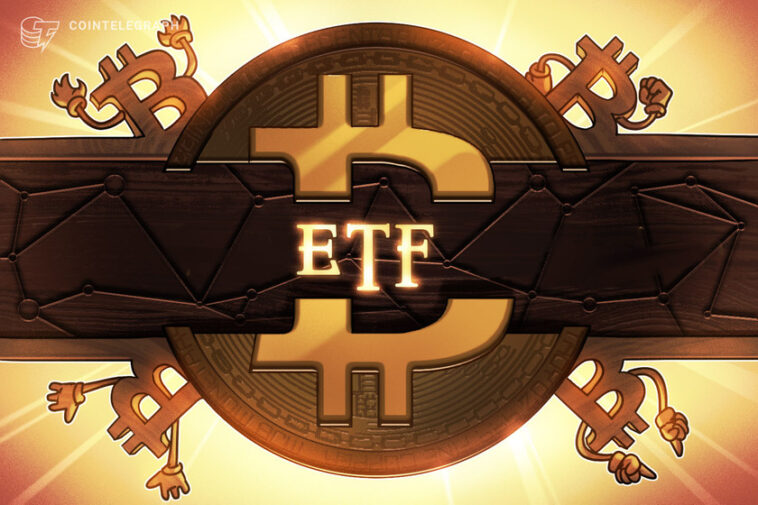The company is renewing its push for a U.S. ETF but offered no specific guarantees or promises.
After several attempts in previous years, Grayscale has renewed its push to release a Bitcoin exchange-traded fund on American asset markets. According to a Monday roadmap, two of its funds, GBTC and ETHE, are on the short-list to become proper ETFs. However, the company has not indicated any concrete efforts, such as filing a new request with the SEC, nor has it provided meaningful timelines for these plans.
Grayscale is one of the major providers of cryptocurrency exposure in traditional markets, operating several trust funds for major cryptocurrencies. These funds hold cryptocurrencies, such as Bitcoin (BTC), Ether (ETH), Bitcoin Cash (BCH) and many others, and issue shares that are expected to reflect the value of the underlying assets.
According to Grayscale’s roadmap, each trust fund falls into four categories of development. The first is the “private placement” phase, where the funds are only available for sale and purchase in over-the-counter deals with the company.
The second category is for publicly-listed shares on secondary markets, meaning that the trust funds receive a ticker symbol and become tradable by the public. Trust funds for Bitcoin Cash, Litecoin (LTC) and Ethereum Classic (ETC) fall into this category. Finally, the most advanced trusts achieve “SEC reporting” status, committing to periodic disclosure of their balance sheets and operations to the Securities and Exchange Commission. Only the Bitcoin and Ethereum trusts are reporting to the SEC currently.
The last and most coveted status is that of an ETF, a fully regulated and liquid fund. ETFs are commonly used for exposure to indexes or baskets of assets in U.S. stock markets. ETFs generally have lower management fees, achieve wider reach than trusts, and are designed to follow their net asset value very closely. Grayscale’s products are particularly weak from that aspect, as GBTC has consistently traded at a very significant premium over the value of the Bitcoin it held.
The GBTC premium has recently collapsed to become a penalty, with it currently trading 10% below NAV. Loss of this premium, coupled with stiff competition from Purpose Bitcoin ETF in Canada, may have spurred Grayscale into action.
The promise of a Bitcoin ETF has been one of the driving Bitcoin narratives since about 2017, when Grayscale first attempted to file for an ETF with the SEC. Regulators have consistently rejected these filings, often citing the unregulated nature of Bitcoin infrastructure as the main hurdle to overcome. Bitwise’s application for a Bitcoin ETF was one of the motivations for publishing its report on exchange volume in 2019, where it claimed that up to 90% of the reported volume was in fact non-existent. This argument was used by the company to claim that most of Bitcoin’s price formation occurred on regulated exchanges — but that did not convince regulators at the time.
A stream of Bitcoin ETF filings by companies, such as VanEck, WisdomTree and SkyBridge, is continuing in 2021, with Grayscale now reentering the fold as well. Given the long history of rejections, the company hedged its ETF promise by noting that “timing will be driven by the regulatory environment.” Institutional acceptance and infrastructure have made enormous strides since Grayscale’s last attempts, though it remains unknown whether this will ultimately sway the SEC into accepting its first application.





 BTC-USD
BTC-USD  ETH-USD
ETH-USD  LTC-USD
LTC-USD  XRP-USD
XRP-USD